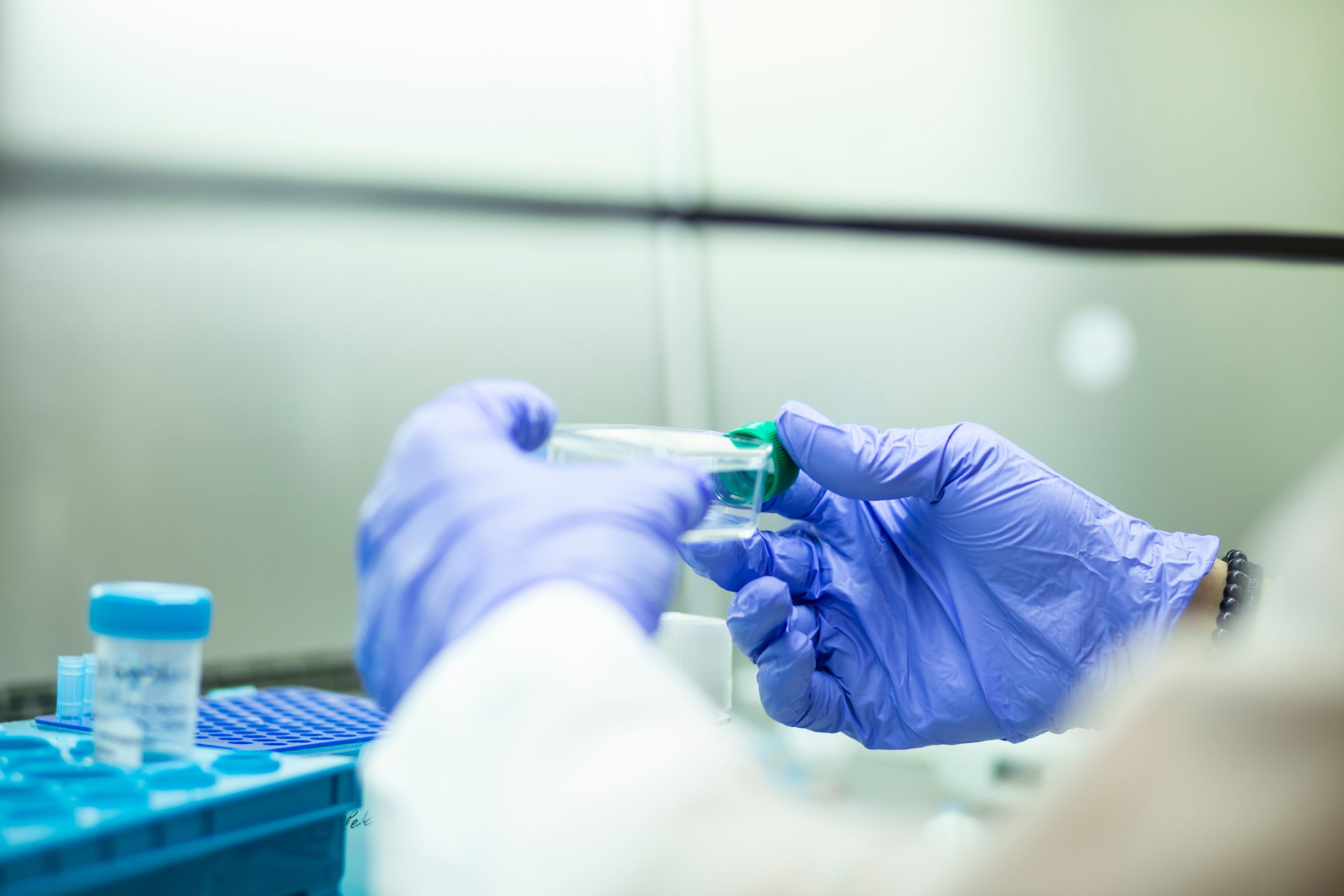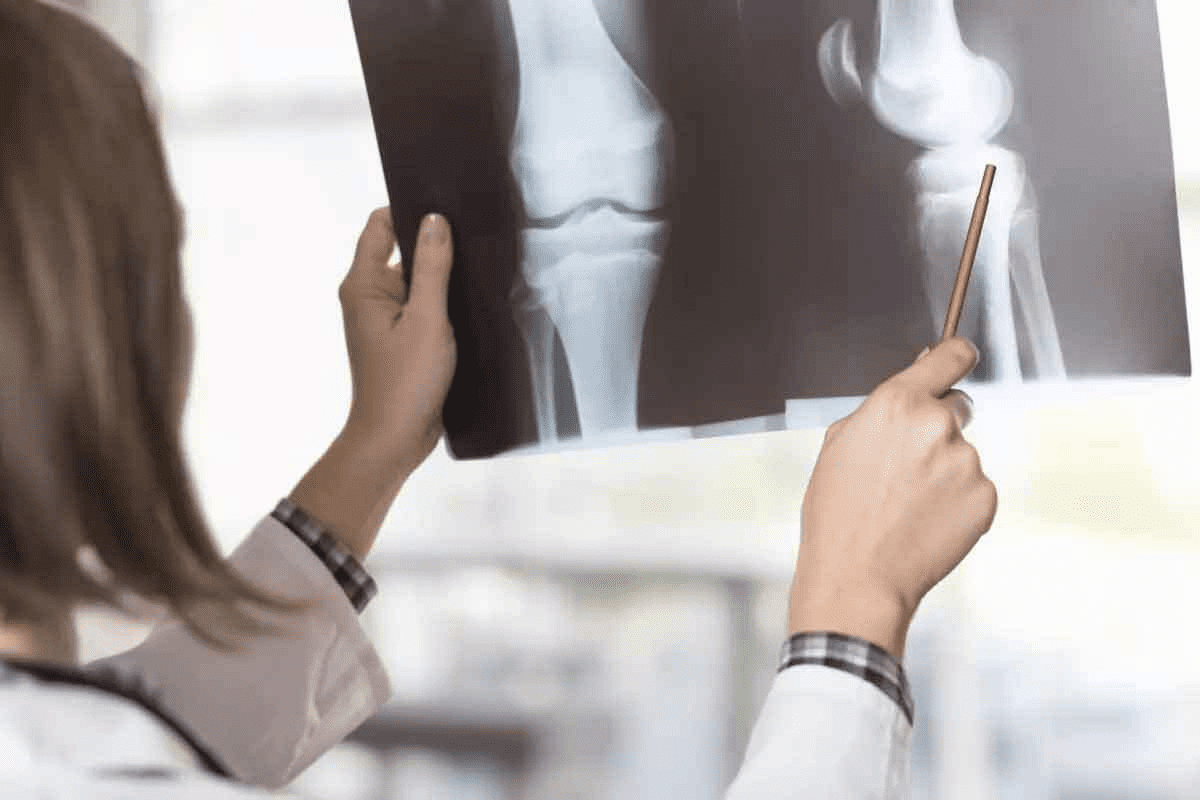Last Updated on November 26, 2025 by Bilal Hasdemir

A digital rectal exam (DRE) is key for men’s health, mainly for spotting prostate-related issues. The prostate exam finger method is often used during this procedure. But, have you ever thought about how it’s done?
Doctors use a gloved, lubricated finger in the rectum to feel the prostate gland. This simple yet effective method lets doctors find problems early.
Knowing about the digital rectal exam procedure can ease your worries. It makes the experience less scary. In this article, we’ll explore how the exam is done and what you should expect.
Key Takeaways
- The digital rectal exam is a fundamental screening tool for prostate health.
- A doctor inserts a gloved, lubricated finger into the rectum to feel the prostate gland.
- The exam helps doctors identify possible prostate-related issues early on.
- Understanding the exam procedure can help ease your anxiety.
- The digital rectal exam is a simple yet effective way to find prostate problems.
Understanding the prostate gland and its importance
Knowing about the prostate gland is key for men’s health. It’s linked to urinary and reproductive functions. The prostate is a walnut-sized organ between the bladder and penis, vital for the male system.
Anatomy and function of the prostate
The prostate gland has glandular and muscular tissue. It mainly makes seminal fluid, which feeds sperm during ejaculation. It also surrounds the urethra, affecting urine flow if it grows too big.
The prostate is usually the size of a walnut. But it can grow with age, causing urinary issues. Knowing its normal size and function is key for regular check-ups.
Common prostate conditions requiring examination
Prostate issues include prostatitis, BPH, and cancer. Prostatitis causes pain and urinary troubles. BPH is a non-cancerous growth that also affects urine flow. Prostate cancer benefits from early detection through screenings.
These conditions show why understanding the prostate is important. Regular exams, like the digital rectal exam (DRE), help find problems early.
The significance of early detection
Early finding of prostate issues is critical for treatment. Screenings can spot problems before symptoms appear, helping with conditions like cancer. The digital rectal exam is a key tool for checking the prostate.
By knowing about the prostate, men can stay healthy. Regular check-ups and screenings are vital for catching and treating prostate problems early.
The digital rectal exam (DRE): A fundamental screening tool
The DRE has been key in checking prostate health for decades. It has evolved to be a must for men’s health checks.
History and development of the prostate examination
The DRE started in the early 1900s. Back then, doctors used manual checks to look at prostate health. Over years, they made the method better to get more accurate results.
As doctors learned more about the prostate, the DRE got better. This allowed them to spot problems more easily.
Why it’s called a “digital” exam
The word “digital” means using a finger. This lets doctors feel the prostate’s size, shape, and texture directly.
“The DRE is a simple yet effective tool in evaluating prostate health. It provides valuable information that can guide further diagnostic testing if needed.”
- A Urologist
Role in preventive healthcare
The DRE is key in keeping men healthy. It helps find prostate problems early. This can lead to better treatment results.
| Benefits of DRE | Description |
| Early Detection | Helps in identifying prostate issues before symptoms appear |
| Simple Procedure | Quick and relatively painless examination |
| Guiding Further Tests | Results from DRE can inform the need for additional diagnostic tests |
Some men worry about the DRE because of prostate exam embarrassment concerns. But, it’s a vital part of keeping the prostate healthy. Doctors are trained to do the exam gently and professionally.
Prostate exam finger method: The standard technique
Learning about prostate exams can clear up worries and myths about them. These exams, or digital rectal exams (DRE), are key for checking prostate health.
Healthcare providers use a specific method for DREs. This ensures the exam is both accurate and comfortable for the patient.
The single-finger approach explained
The standard prostate exam uses just one finger. This choice is made for anatomical reasons and to ensure precision. The single-finger method helps doctors accurately check the prostate gland for any issues.
Why one finger is the medical standard
Using one finger in prostate exams is the norm. It allows for the right amount of pressure and better feeling of the prostate gland. This is key for a precise exam.
Anatomical considerations for finger examination
The shape of the rectum and prostate gland means one finger is best. Using one finger makes the exam less painful and lets for a detailed check. The prostate is close to the rectal wall, making a single-finger exam the best way to access it.
In summary, the single-finger method in prostate exams comes from careful thought about anatomy and the need for exactness. It’s a key part of men’s preventive healthcare, becoming more important as they get older.
Step-by-step breakdown of a prostate examination
Men often wonder what happens during a prostate exam. Knowing the process can help ease their worries. A prostate examination, or digital rectal exam (DRE), is a simple check for prostate issues.
Pre-examination preparation
Before the exam, patients undress from the waist down and get into a certain position. This prep is key for a smooth exam.
- The patient undresses from the lower half of their body.
- They might get a drape or sheet for privacy.
- They’re told to position themselves for easy access.
Patient positioning during the exam
Getting the right position is important for the DRE. The position can change based on the doctor’s preference and the patient’s comfort.
- The patient might stand with feet apart and bend forward.
- Or they could lie on their side with knees up.
- This position helps the doctor reach the rectum easily.
The examination process
The DRE is a quick procedure. The doctor uses a gloved, lubricated finger for the exam.
The doctor checks the prostate gland for any issues. This usually takes less than a minute.
| Step | Description |
| 1 | Patient preparation: undressing and positioning |
| 2 | Healthcare provider performs DRE with a gloved, lubricated finger |
| 3 | Examination of the prostate gland for abnormalities |
Knowing these steps can make men feel more at ease during a prostate exam.
What doctors are feeling for during a prostate exam
Doctors check the prostate gland for certain signs during an exam. This is key to spotting problems like prostatitis or prostate cancer.
Normal Prostate Characteristics
A healthy prostate has certain traits that doctors look for. These include:
- A smooth surface
- A symmetrical shape
- A firm consistency, similar to the tip of the nose
- A size that is typically about the size of a walnut
Doctors aim to find these traits to confirm the prostate’s health.
Abnormal Findings and Their Significance
Abnormal findings can point to health issues. Some include:
- Hard or firm areas, which could be indicative of prostate cancer
- Tenderness or pain upon examination, suggesting prostatitis or inflammation
- An irregular shape or size, which may indicate a range of prostate issues
- Nodules or lumps, which require further investigation
The finger exam’s role in spotting prostate cancer is vital. It’s used alongside the PSA test. Abnormal findings may lead to more tests, like a biopsy, to check for cancer or other issues.
This exam is a simple yet powerful tool for men’s health. It shows how important it is for keeping men healthy.
The science behind using one finger for prostate exams
Using one finger for prostate exams is based on anatomy and medical studies. This method, called the digital rectal exam (DRE), is key for checking prostate health.
Anatomical Reasons for the Single-Finger Approach
The prostate gland is in front of the rectum, making the rectal wall the best way to examine it. A single finger allows for better control and feeling. This helps doctors find small changes in the prostate.
The shape of the rectum and prostate supports using one finger. This method is less painful and gives more information about the prostate’s size and feel.
Medical Research Supporting This Method
Many studies show the DRE is good at finding prostate cancer. The single-finger method is very sensitive and helps doctors decide what tests to do next.
A study in a well-known medical journal found DRE is very accurate in finding prostate cancer. It works best when used with other tests like PSA. The single-finger method gives doctors quick feedback, which is very helpful.
Effectiveness and Limitations of Manual Examination
Even though the single-finger DRE is good, it has its limits. The skill of the doctor can greatly affect how accurate the exam is. Different doctors may find different things.
| Aspect | Single-Finger DRE |
| Anatomical Access | Direct access through the rectum |
| Sensitivity | High sensitivity for detecting abnormalities |
| Examiner Variability | Significant impact on accuracy |
| Patient Comfort | Generally well-tolerated, though can cause discomfort |
The table shows the main points about the single-finger DRE. It points out its good points and things to think about.
Patient experience: What to expect during a prostate exam
Knowing what to expect during a prostate exam can make patients feel less anxious. This exam, though it might be a bit uncomfortable, is key for men’s health. Learning about it can help you get ready both physically and mentally.
Sensations during the examination
During a prostate exam, you might feel different things. The most common feeling is a bit of pressure or discomfort when the doctor puts a gloved, lubricated finger in your rectum. This feeling is usually short and, while it might not be pleasant, it’s not usually painful.
Some men might feel a slight pinch or the urge to urinate, but these feelings are temporary. It’s important to talk to your doctor during the exam. If you’re feeling a lot of discomfort, let them know. They can adjust their method or add more lubricant to make it more comfortable.
Duration and discomfort levels
The prostate exam itself is quick, usually taking less than a minute. While it’s not enjoyable, the discomfort is usually mild and doesn’t last long. Many men find that the fear or embarrassment before the exam is worse than the discomfort during it.
Think of it this way: many men have this exam every year without major problems. It’s a normal part of men’s healthcare, more so as they get older.
Mental preparation strategies
Mental preparation can greatly affect how you feel during a prostate exam. Learning as much as you can about the procedure can help reduce fear and anxiety. Knowing the steps and why they’re done can make you feel more at ease.
- Breathing exercises can help relax your body before and during the exam.
- Talking openly with your healthcare provider about any worries or fears can also be helpful.
- Some men find it helpful to have a friend or family member there for support, but it’s up to you.
By preparing mentally and knowing what to expect, men can make their prostate exam experience less scary. Remember, this exam is a proactive step towards keeping your health in check.
Preparing for your prostate exam: A patient’s guide
Getting ready for a prostate exam is key. It’s about being physically ready and knowing what to expect.
Physical Preparation Recommendations
To make your prostate exam comfortable and effective, follow these steps.
- Empty your bladder before the exam to avoid discomfort.
- Maintain good hygiene to feel more at ease during the exam.
- Avoid constipation by drinking water and eating fiber-rich foods. This makes the exam more comfortable.
Questions to Ask Your Healthcare Provider
Being informed is important for your prostate exam. Ask your healthcare provider these questions:
- What does the exam entail?
- Will the exam be painful?
- How long will the examination take?
- Are there any specific preparations I need to make before the exam?
- What are the next steps after the exam?
Post-Examination Expectations
After the prostate exam, your healthcare provider will share the results with you.
If everything looks normal, you’ll know when to schedule your next check-up. If there are any issues, you might need more tests or exams. Remember, a prostate exam is just one part of keeping your prostate healthy.
Knowing what to expect during and after a prostate exam can help reduce anxiety and embarrassment. It lets men take care of their health more easily.
Common misconceptions about prostate examinations

The prostate exam is a key health check that many men misunderstand. These misunderstandings can stop men from getting this important screening. This can lead to late diagnoses and treatments.
Myths about the number of fingers used
Many think doctors use more than one finger for the exam. But, doctors usually use just one finger. This method is both effective and comfortable for everyone involved.
Using one finger helps doctors get a clear picture of the prostate. They can check its size, shape, and feel. This approach is backed by medical studies and is designed to be as comfortable as possible.
Addressing fears about pain and discomfort
Many men worry the exam will hurt. While it might feel a bit uncomfortable, it’s not usually painful. The discomfort is short-lived, lasting just a few seconds.
Knowing what to expect can ease worries. Doctors are trained to make the exam as comfortable as possible. Men can also prepare themselves to feel less anxious.
Cultural and psychological barriers to screening
Cultural beliefs and personal attitudes can affect a man’s decision to get a prostate exam. In some cultures, talking about prostate health is seen as taboo. This can lead to a lack of awareness and a reluctance to see a doctor.
It’s important to tackle these cultural and psychological barriers. Education and awareness campaigns can help make prostate health discussions more common. This can encourage more men to get screened.
| Misconception | Reality |
| Doctors use multiple fingers for the exam. | A single finger is used for a more precise examination. |
| The exam is very painful. | While there might be brief discomfort, it’s generally not painful. |
| Prostate exams are embarrassing. | Healthcare professionals are trained to make the experience as comfortable as possible. |
When and how often should men get prostate exams?

Men often wonder when to talk about prostate screening with their doctors. The timing and frequency of prostate exams depend on age, risk factors, and medical guidelines.
Age-based Recommendations
Health experts suggest men start talking about prostate screening at 50. This is because prostate cancer risk grows with age. Most cases are found in men over 65. Men with a family history or other risk factors might need to start screening earlier.
Risk Factors Requiring Earlier or More Frequent Screening
Men with certain risk factors may need to screen earlier or more often. These include a family history of prostate cancer, being African American, or having BRCA1 or BRCA2 genetic mutations. Knowing these risk factors helps determine the right screening schedule.
Current Medical Guidelines from Major Health Organizations
Groups like the American Cancer Society and the U.S. Preventive Services Task Force offer prostate cancer screening guidelines. They suggest men discuss the pros and cons of screening with their doctors. The goal is to create a personalized screening plan based on individual risk and preferences.
Considering age, risk factors, and guidelines helps men make informed decisions about their prostate health. Regular talks with healthcare providers are essential for maintaining good prostate health.
Digital rectal exam vs. PSA testing: Complementary screening methods
The digital rectal exam and PSA test are two ways to screen for prostate cancer. Each has its own strengths and weaknesses. Knowing how they work together is key to finding prostate cancer early.
Comparing Accuracy and Limitations
The digital rectal exam (DRE) lets a doctor feel the prostate gland through the rectum. It’s a simple test that can spot problems with the prostate’s size or shape. But, it depends on the doctor’s skill and might miss deep issues.
The Prostate-Specific Antigen (PSA) test checks PSA levels in the blood. High levels can mean cancer, but also other issues. The PSA test can find problems sooner than a DRE. Yet, it’s not specific to cancer, causing false alarms.
Why Both Tests Are Often Recommended Together
Using both DRE and PSA tests together helps find more prostate cancers. The DRE gives a quick look at the prostate’s physical state. The PSA test offers a blood test view. Together, they catch cancers that might be missed by one test.
For example, a man with a normal PSA but an abnormal DRE might need a biopsy. This could show cancer. On the other hand, a high PSA level might mean more tests, even with a normal DRE.
Interpreting Results from Multiple Screening Methods
Understanding both DRE and PSA test results is important. A doctor must look at the patient’s age, family history, and past tests. This helps decide if more tests or action are needed.
| Test | What It Measures | Limitations |
| Digital Rectal Exam (DRE) | Physical characteristics of the prostate gland | Dependent on practitioner skill; may not detect deep issues |
| Prostate-Specific Antigen (PSA) Test | Level of PSA in the blood | Not cancer-specific; can lead to false positives |
By combining DRE and PSA test results, doctors can better understand a patient’s prostate health. This can lead to finding and treating prostate cancer sooner.
Modern alternatives to the traditional finger exam
Healthcare has seen big changes, leading to new ways to check for prostate issues. The old digital rectal exam (DRE) is not the only way anymore. Now, there are better and more comfortable options for checking the prostate.
Advanced Imaging Techniques
New imaging methods have changed how we check the prostate. Multiparametric MRI (mpMRI) is a big step forward. It gives clear pictures of the prostate, helping spot cancer early.
A study in the Journal of Urology shows mpMRI is very good at finding serious prostate cancer. A top urologist, says it’s a game-changer. “It’s more precise and less scary than old methods,” he explains.
Biomarker Testing Options
Biomarker tests are also new and important. Tests like the Prostate Health Index (phi) and 4Kscore help find prostate cancer better. They look at blood markers linked to cancer, helping tell if it’s serious or not.
- The Prostate Health Index (phi) uses three PSA tests to find cancer more accurately.
- The 4Kscore test looks at four kallikrein biomarkers to give a cancer risk score.
When Alternatives are Recommended Over Manual Examination
While the DRE is useful, new methods are better in some cases. Men at high risk or with past cancer might get better results from imaging or biomarker tests. Also, those who don’t like the DRE might choose these options.
A urology expert says it’s all about what’s best for each person. “Sometimes, using both old and new methods gives the best picture,” she notes.
Conclusion: The importance of prostate health screening despite discomfort
Prostate health screening is key for men’s health. It helps find prostate cancer early. The digital rectal exam (DRE) might be uncomfortable, but it’s vital for health.
Getting past the fear of the exam is important. It can greatly improve treatment chances. Early detection makes treatment easier.
Adding prostate exams to your health routine is a smart move. It’s a big step towards staying healthy. Seeing prostate health screening as a must is essential.
Men should talk to their doctors about their risk and screening choices. This way, they get advice tailored to their needs.
FAQ
How many fingers do doctors use during a prostate exam?
Doctors usually use one finger, the index finger, for a digital rectal exam (DRE). This is to check the prostate gland.
Why do doctors use only one finger for a prostate exam?
The single-finger method is the standard. It allows for a precise examination of the prostate gland due to anatomical reasons.
Is a prostate exam painful?
Some men might feel uncomfortable, but a prostate exam is not usually painful. The discomfort can vary from person to person.
What are doctors feeling for during a prostate exam?
Doctors check for normal prostate characteristics like size and texture during a DRE. They also look for abnormal findings, like lumps or irregularities, which could indicate prostate issues.
How long does a prostate exam take?
A digital rectal exam usually takes just a few minutes to perform.
Are there alternatives to the traditional finger exam for prostate screening?
Yes, there are modern alternatives. These include advanced imaging techniques, like MRI, and biomarker testing options. These may be recommended in certain cases.
How often should men get prostate exams?
The frequency of prostate exams varies based on age, risk factors, and medical guidelines. Men should talk to their healthcare provider about their individual needs.
What is the difference between a digital rectal exam and a PSA test?
A DRE is a manual examination of the prostate. A PSA test measures the level of prostate-specific antigen in the blood. Both tests are used together for complete prostate screening.
Can a digital rectal exam detect prostate cancer?
A DRE can help find abnormalities that may indicate prostate cancer. But it’s not 100% accurate. It’s often used with PSA testing for better screening.
How can I prepare for a prostate exam?
To prepare, understand what to expect and ask questions. Follow any pre-examination instructions from your healthcare provider.
Are there any cultural or psychological barriers to prostate screening?
Yes, some men might feel embarrassed or anxious about prostate exams. Talking about these concerns and understanding the importance of screening can help overcome these barriers.
What are the current medical guidelines for prostate screening?
Major health organizations provide guidelines for prostate screening. These include recommendations on when to start screening and how often based on age and risk factors.
References
- Cancer Research UK. (2025, September 8). Examination of your prostate. https://www.cancerresearchuk.org/about-cancer/tests-and-scans/examination-prostate






